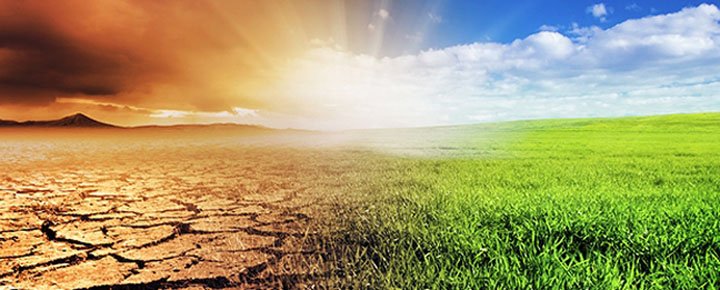The world population is increasing day by day and expected to reach 9.7 billion by 2050.
Agriculture has a key role to play in feeding this growing population but agriculture must adapt
the climate change and help mitigate climate impacts. 570 million farms around the world are
facing the threat of climate change ahead on and yet we demanding more from agriculture than
ever before, more food for growing population and better incomes for those working across the
food chain and the careful management about planet soils and water resources. Agriculture must
therefore transform itself if it is to feed a growing global population and provide the basis for
economic growth and poverty reduction. Climate change will make this task more difficult under
a business-as- usual scenario, due to adverse impacts on agriculture, requiring spiraling
adaptation and related costs.

To achieve food security and agricultural development goals, adaptation to climate change and
lower emission intensities per output will be necessary. This transformation must be
accomplished without depletion of the natural resources. Climate change is already having an
impact on agriculture and food security as a result of increased prevalence of extreme events and
increased unpredictability of weather patterns. This can lead to reductions in production and
lower incomes in vulnerable areas. These changes can also affect global food prices. Developing
countries and smallholder farmers and pastoralists in particular are being especially hard hit by
these changes. Many of these small-scale producers are already coping with a degraded natural
resource base. They often lack knowledge about potential options for adapting their production
systems and have limited assets and risk-taking capacity to access and use technologies and
financial services. This is no easy task, how can our Agriculture sector step up to this challenge.
The only solution of this problem is “Climate Smart Agriculture”.
Concept of Climate Smart Agriculture:
Climate Smart Agriculture is not a new technique; it is an approach to identify production
systems that can best respond to the impact of climate change and to adjust these systems to suit
local environmental conditions now and in a future. This system can help transform agricultural
systems to support sustainable development and food security in a changing climate.
Climate Smart Agriculture integrates the three dimensions of sustainable development
(economic, social and environmental) by jointly addressing food security and climate challenges.
It is composed of three main pillars:
1-Sustainably increasing Agriculture productivity:
2- Adapting and building resilience to climate change:
3-Reducing and/or removing greenhouse gases emissions, where possible:
Farm of every type and every size can become climate smarter
FOR EXAMPLE; by identifying and promoting sustainable farming practices and tools using
inputs more efficiently and effectively to grow more from less and building markets where
farmers can excess what they need and sell any surplus what they have produced. Climate
change is a challenge to our food system but it also an opportunity to innovate and adapt;
EASY TO SAY HARDER TO DO
We must work together to become climate smarter and to support the necessary technical, policy
and investment solutions that our farmer needs.
Reality about Climate Smart Agriculture: we can make Climate Smart Agriculture reality,thses
are ingridients we need:
Expand the evidence base; there is need to know the current and predictable impacts
of climate change and just have vulnerable the agriculture communities and
ecosystem varies out.
Improve policies; people working in many different field of agriculture (climate
change, food security and land use need to collaborate). Work together on supported
polices and plans. Taking into account the entire landscape.
Support and empower local institution; local institutions are needed to develop
capacities and motivate men and women farmer, in this they can adapt practices and
plan together the best way to do Climate Smart Agriculture.
Combine financing options in a new way; we should bring together the financing
sources the target agriculture and climate change.
“Food security depends on how we treat our planet; lets make sure our agriculture is productive
and sustainable for generations to come
Conslusion:
Addressing food security and climate change challenges has to be done in an integrated way. To
increase food production and to reduce emission intensity, thus contributing to mitigate climate
change, food systems have to be more efficient in the use of resources. To ensure food security
and adapt to climate change they have to become more resilient. This has to happen globally,
worldwide and everywhere. Increased efficiency in one part of the world provides food and
income where it takes place but it also provides more food, globally and thus can provide food
elsewhere and reduce its cost, globally. With increased risks, increasing resilience of the
worldwide food system also means that efficiency and resilience have to be improved
everywhere, so as to spread risk. Therefore CSA is a dynamic approach that concerns all farmers,
all over the world. But developing countries are more at risk of food insecurity. They are more at
risk of climate change. They also have more potential for mitigation (and adaptation?), because
they have to increase their production more, and because there is an important efficiency gap. On
the other hand developing countries have less means, policies and institutions to address these
challenges. We need to address problems regarding climate change now before its too late by
adjusting our production system. Impacts of climate change mitigate by farmers through
intercropping, multiple cropping, companion planting and crop rotation.